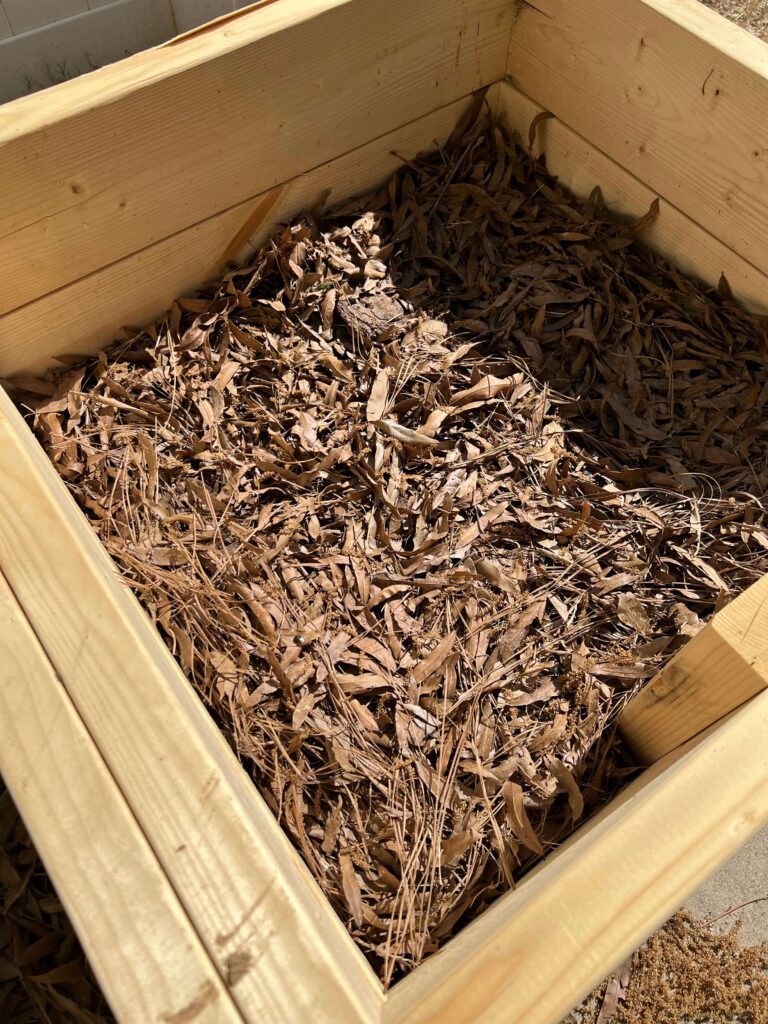
Thinking about starting a raised garden bed but unsure how to prepare soil for raised garden bed? You’re not alone! The key to thriving raised bed gardens isn’t just what you plant—it’s the foundation you set beneath it. Properly prepared soil type ensures strong root growth, healthy plants, and a bountiful harvest.
Have you ever planted in a raised bed only to find your plants struggling, wilting, or failing to produce? Poor soil preparation could be the culprit. It’s easy to assume that simply adding some dirt to a raised bed is enough, but successful gardening requires a well-balanced soil mixture with the right nutrients, aeration, and drainage. Without proper preparation, plants can become stunted, more susceptible to disease, and less productive.
So, how do you ensure your type of soil is packed with all the essentials your plants need to thrive? Understanding what goes into creating a nutrient-rich garden soil blend is a well-aerated soil that will make all the difference in your gardening success.
Whether you’re a beginner or an experienced gardener looking to refine your soil preparation techniques, this guide will walk you through the essential steps to create the perfect growing environment for your raised garden bed. Let’s dive in and make a rich soil for your raised garden bed!
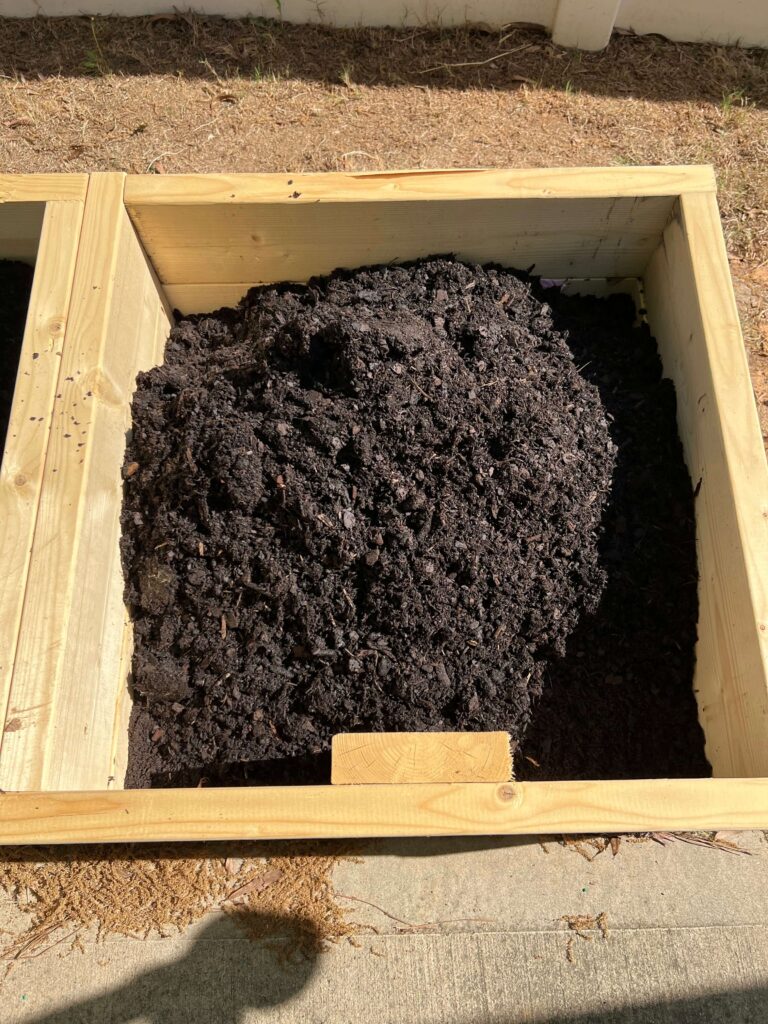
Choosing the Right Soil Composition
When preparing your raised garden bed, filling it with plain yard dirt is not enough. Raised beds require a specially designed soil blend that supports plant growth, enhances drainage, and encourages root development. The soil in a raised bed should be loose, well-aerated, and rich in nutrients to ensure your plants thrive throughout the growing season.
Why the Right Soil Mix Matters
A poor soil mix can lead to compacted, poorly drained, or nutrient-deficient soil, which negatively affects plant health. Raised garden beds are designed to offer better drainage, so choosing the right combination of soil components can significantly improve plant growth. The goal is to create a growing environment that is nutrient-rich and well-draining, yet capable of retaining enough moisture to support healthy plant roots.
What is the Best Soil Mixture for a Raised Garden Bed?
While there are many approaches to preparing soil for raised garden beds, a simple and effective mix consists of the following components:
- 60% Topsoil – Topsoil is essential for providing the base structure of your soil. Provides not only structure but also essential minerals.
- 30% Compost – Compost is the heart of healthy soil. Boosts nutrients and improves soil health.
- 10% Aeration Materials (Perlite, Vermiculite, Coarse Sand) – The highways of the raised garden bed. Aeration materials are crucial for maintaining good soil structure and drainage.
Optional Additions for Specific Needs
Depending on your plants’ needs and the specific growing conditions of your garden, you can make further adjustments to the soil mix:
- Peat Moss or Coconut Coir – If your soil mix is lacking in moisture retention, consider adding peat moss or coconut coir. These materials help retain water, ensuring that your plants stay hydrated during dry spells.
- Worm Castings – Known for being rich in essential nutrients and beneficial microbes, worm castings can be an excellent addition to your raised bed soil mix. These castings not only improve soil health but also promote root growth and increase plant resistance to pests and diseases.
- Lime or Sulfur – If your soil pH needs adjustment (either too acidic or too alkaline), you can add lime to raise the pH or sulfur to lower it. Most plants prefer a slightly acidic to neutral pH, ranging from 6.0 to 7.0.
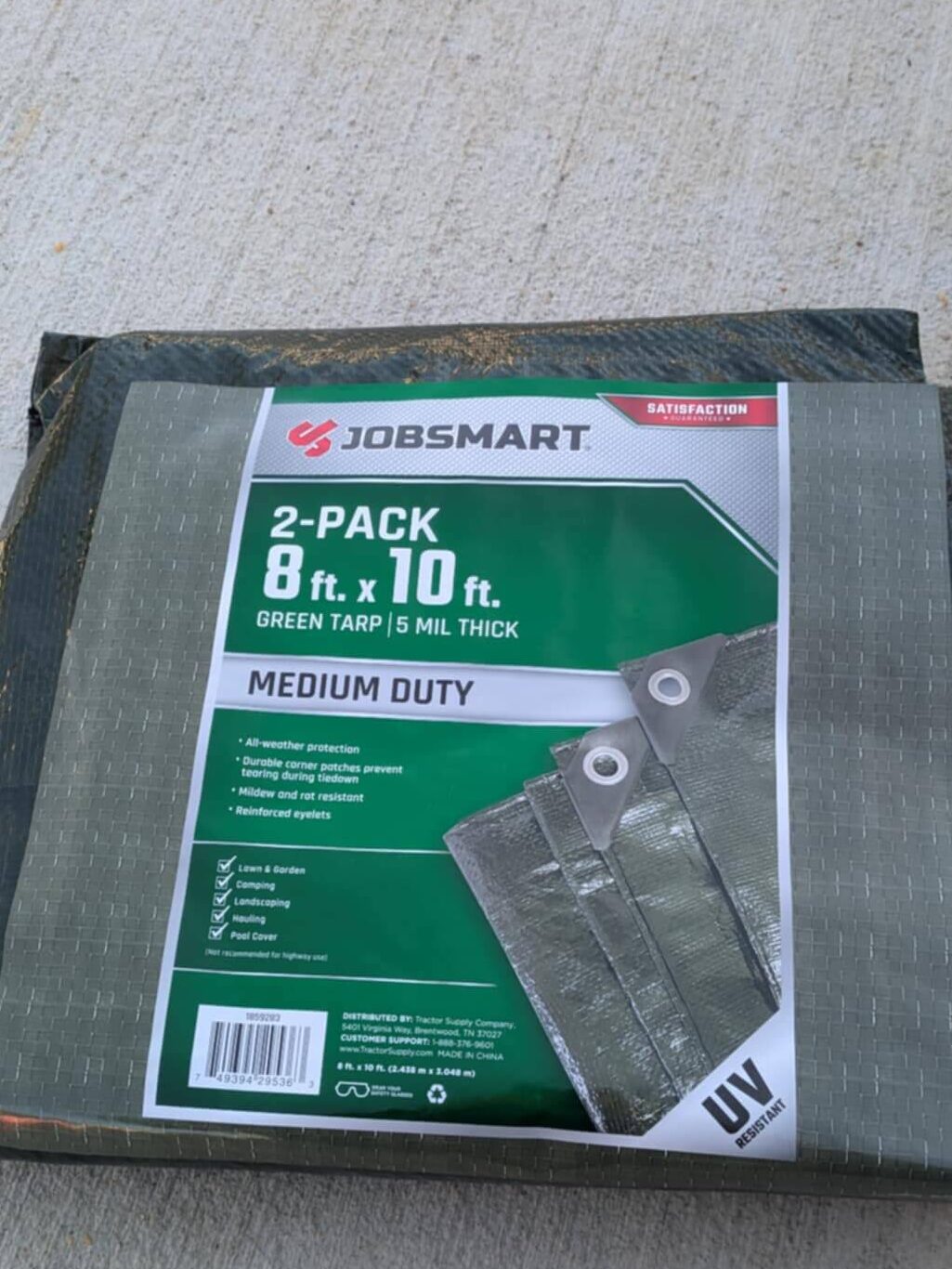
Mixing the Soil Components
Once you’ve gathered your materials, it’s crucial to mix them well before filling your raised bed. This ensures that nutrients are evenly distributed throughout the soil and that the texture supports healthy plant growth. Aim for a fluffy, well-draining soil that holds moisture without becoming soggy. It’s a good idea to prepare your soil on a tarp or large surface to blend the ingredients thoroughly.
By following this balanced mix of soil components, your raised garden bed will be equipped with the optimal foundation to support strong, healthy plants from the very start. Keep in mind that soil composition may need adjustments each year based on the growing season and the specific needs of your plants.
Amending the Soil for Optimal Growth
Even if you have a solid soil base, amendments are crucial to maintaining long-term soil health. Here’s how to improve your soil’s fertility and structure:

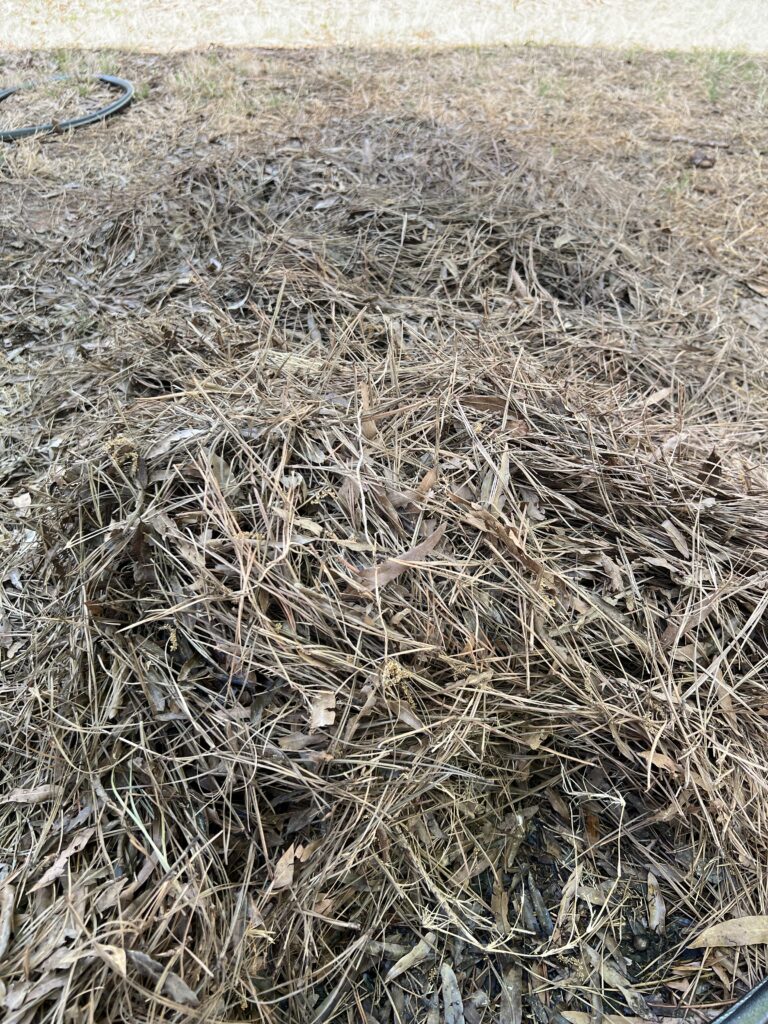
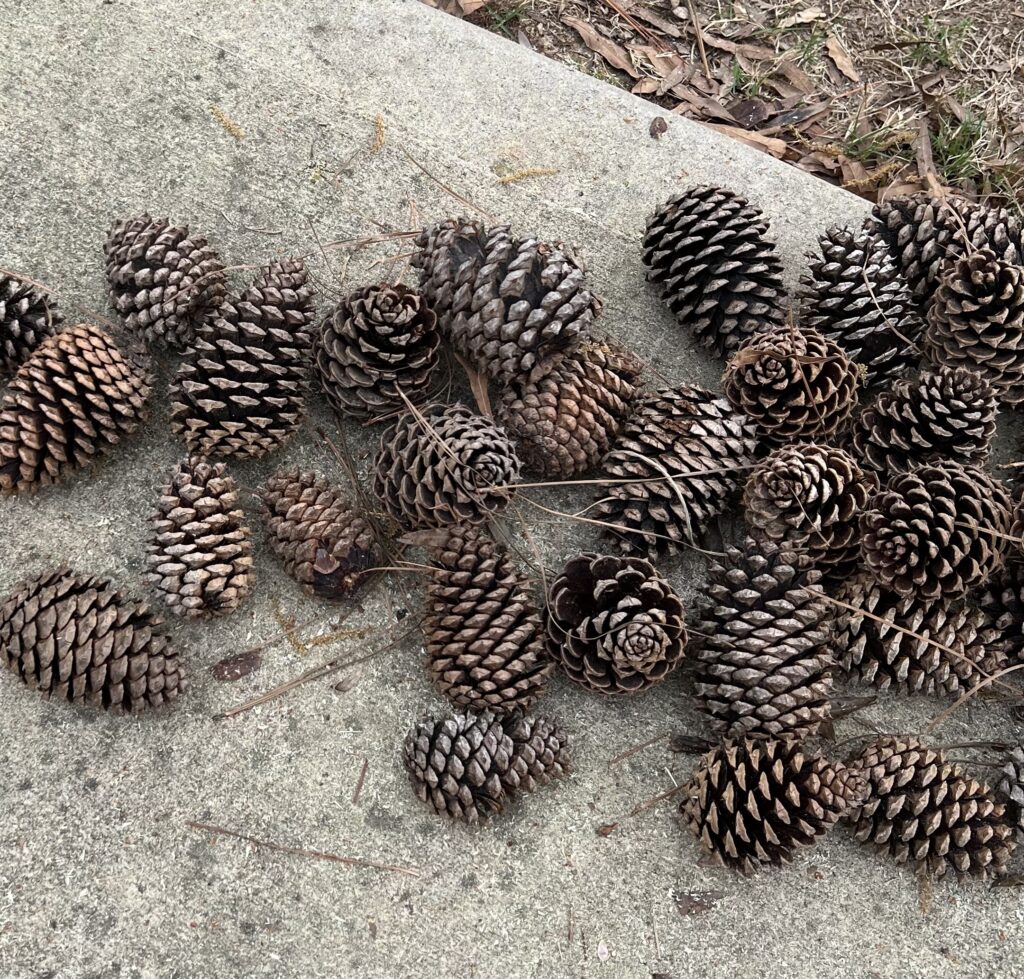
Adding Organic Matter
Organic matter is the heart of any thriving garden. Consider adding:
- Composted manure – Rich in nitrogen, ideal for vegetables.
- Worm castings – A powerhouse of beneficial microbes.
- Peat moss or coconut coir – Helps retain moisture while improving soil texture.
- Pine Needles, pine cones and leaves – These all have amazing nutrients that will break down over time and help your plants.
Balancing Soil pH
Most plants prefer a slightly acidic to neutral pH (6.0-7.0). You can test your soil using an at-home pH kit and adjust accordingly:
- If too acidic: Add lime to raise the pH.
- If too alkaline: Add sulfur to lower the pH.
Regular testing and amending will ensure your plants receive the nutrients they need throughout the growing season.
Preparing the Soil for Planting
Once you have the right soil mixture and amendments, the final step is making sure your soil is ready for planting. Here’s how:
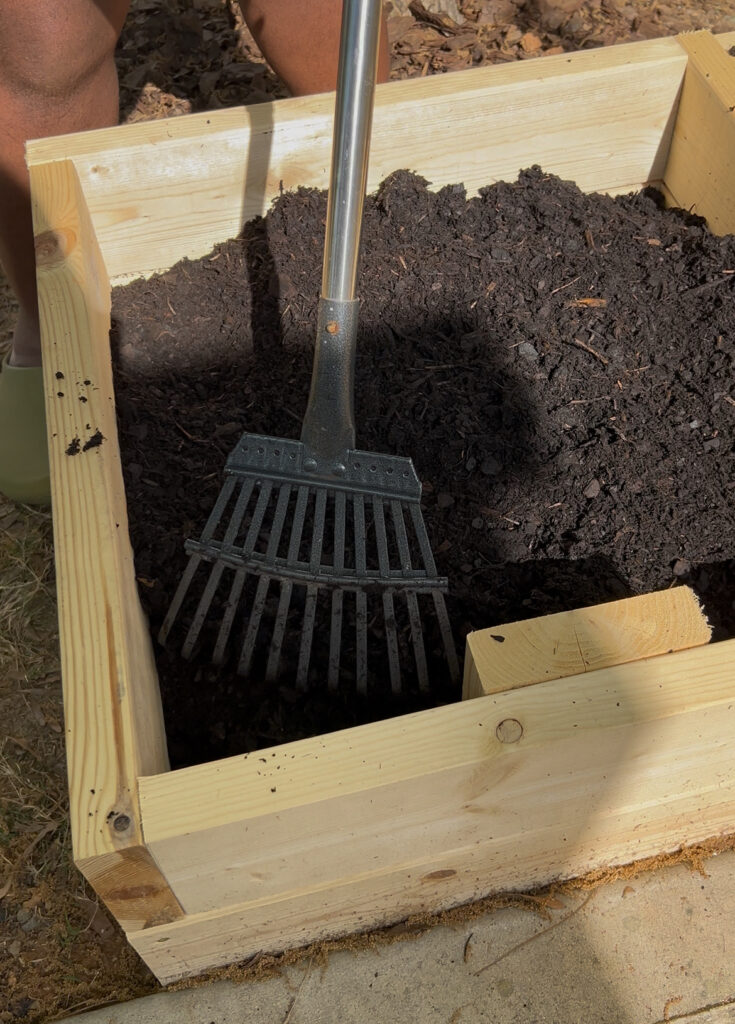
Fluff and Aerate the Soil
Before planting, use a garden fork or broadfork to loosen the soil. This prevents compaction, improves potentially poor drainage, and allows roots to grow deeper.
Mulch to Retain Moisture
Adding a 2-3 inch layer of mulch (such as straw, wood chips, or shredded leaves) helps:
- Retain moisture
- Suppress weeds
- Improve soil health as it decomposes
Water the Soil Before Planting
Moist but not soggy soil is ideal for planting. Water thoroughly a day before planting to help the soil settle and create the perfect environment for seedlings.
Managing Soil Over Time for Long-Term Success
Once you’ve prepared your raised bed soil and planted your crops, the work doesn’t stop there! Soil health is an ongoing process, and maintaining your soil throughout the growing season is just as important as the initial preparation. Here are a few tips to help you manage your soil amendments effectively and ensure continued plant success year after year.



Regularly Add Compost and Organic Matter
One of the best ways to keep your soil fertile and healthy is by regularly adding compost and other organic materials. As your plants grow, they deplete essential nutrients in the soil. Adding compost at the start of each growing season, and even mid-season if possible, replenishes those nutrients. You can also mix in other organic materials like leaf mold or well-rotted manure to keep the soil balanced.
Rotate Your Crops
Crop rotation is a key practice for maintaining soil health over time. By planting different crops in your raised bed each year, you reduce the risk of soil depletion and disease buildup. For example, after growing nitrogen-hungry crops like beans or peas, try planting heavy feeders like tomatoes or peppers in the next season. This ensures that no one nutrient becomes too scarce.
Test Your Soil Regularly
Soil composition and pH can change over time, especially as plants grow and decompose. To ensure your soil remains at optimal levels for your crops, get soil test results regularly—at least once per season. This will help you track any shifts in pH or nutrient levels and adjust your amendments as needed. You can easily test your soil with a soil test probe and an at-home pH test kit or send it to a local cooperative extension office for more detailed results.
Prevent Soil Erosion
Over time, water, wind, and other factors can cause your raised bed soil to erode or wash away. To prevent this, make sure your raised bed has proper drainage systems, such as gravel layers at the bottom. Adding mulch on top of your soil not only conserves moisture but also helps reduce erosion. You can also consider using landscape fabric at the base of your raised bed to keep the soil intact while still allowing for good drainage.
Avoid Compaction
Raised garden beds can be prone to soil compaction, especially if you work or walk on the soil too much. To maintain soil structure, avoid walking on the soil inside the bed. If you need to work in the bed, use a broadfork or garden fork to gently aerate the soil without compacting it further.
By managing your raised bed soil throughout the year, you’ll create a sustainable growing environment that keeps your plants healthy, nourished, and productive.
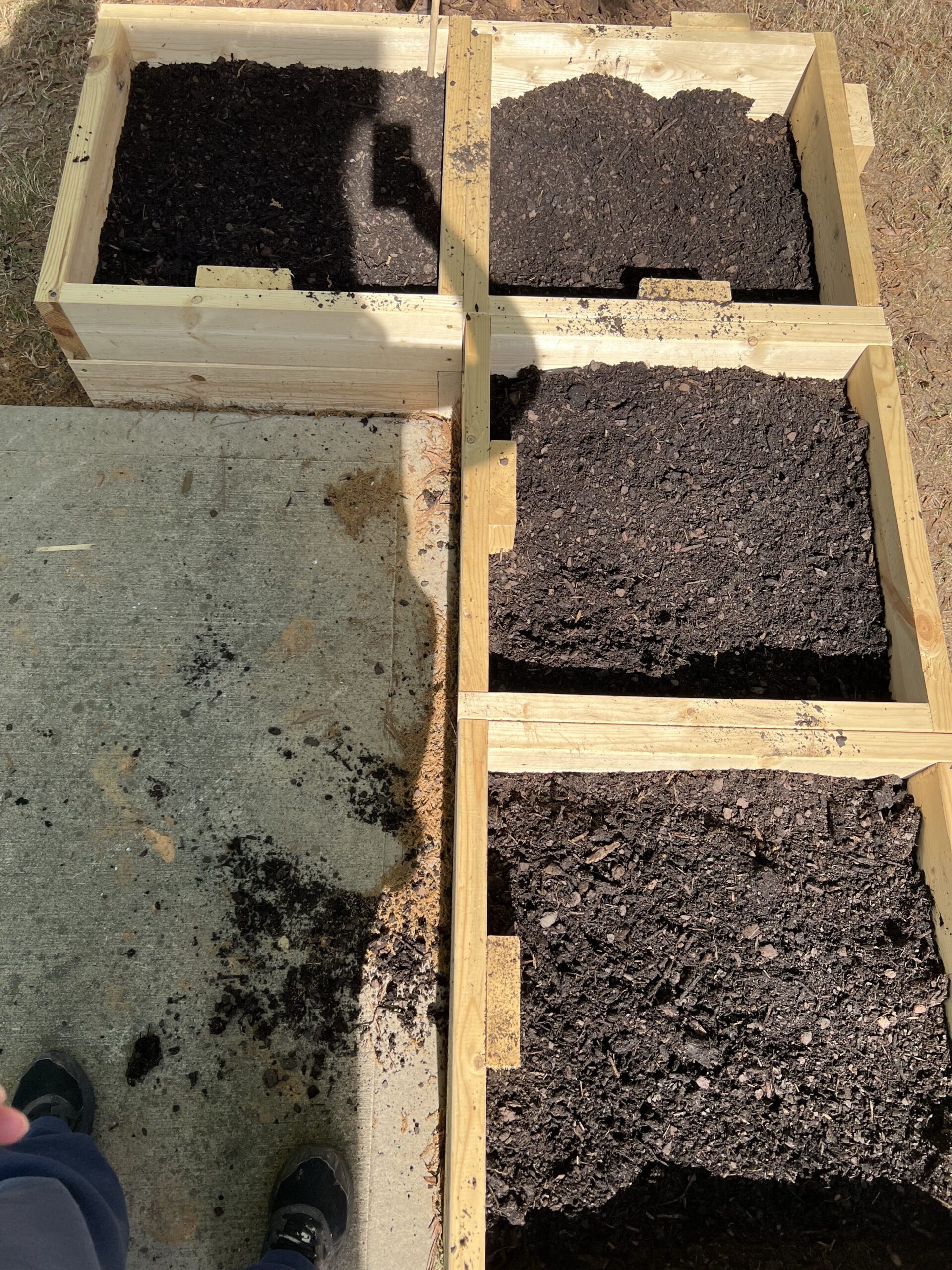
Before you go and get to planting…
No matter if this is your first garden, by following these steps all of your hard work will be worth it. You’re setting your raised garden bed up for success for any vegetable garden or flower garden to thrive!
How to prepare soil for raised garden bed with the right soil mix, adding essential amendments, and ensuring proper aeration will lead to healthier plants and a higher productivity of your garden. Taking the time to build healthy soil now will pay off in the long run, giving your plants a solid foundation to thrive season after season.
Remember, successful gardens are an ongoing process, and soil nutrients health evolves over time. Regularly adding compost, checking pH levels, and replenishing nutrients will keep your raised bed performing at its best. The more care you put into your soil, the better your plants will reward you with lush growth and abundant harvests.
Are you ready to start your raised bed garden? Check out our DIY Raised Garden Bed Tutorial to learn how to build the perfect structure for your garden. Also, follow us on Instagram @buildacozyhome for more gardening tips and DIY inspiration!
If or when you do make your own How to Prepare Soil for Raised Garden Bed Project. I’d love for you to follow us and tag us on Instagram so I can see your really DIY projects finished results! Happy crafting!
COZY HOME, COZY RECIPES:
Every cozy home deserves amazing recipes, and it’s even better when those recipes are both delicious and healthy. Our goal is to provide tasty meals that are easy to make, regardless of your skill level.
Fast, easy meals leave more time for fun activities, making your home a hub of joy and good food.
CONNECT WITH US:
As always, we love hearing about your experiences with our “How to Prepare Soil for Raised Garden Bed”. Reach out to us through our social channels. Any questions you have, we’re here to answer.
Stay updated by joining our newsletter, offering a monthly dose of new recipes and a first look at upcoming projects.
MORE COZY KITCHEN RECIPES:
If you’re hungry for more, explore our collection of Cozy Kitchen Recipes. Another healthy favorite is the “Sausage Potato Veggie Bake.” Find these recipes and more here.
DIY RESOURCES:
For additional resources, check out our DIY Tutorials, offering a wealth of information to enhance your home improvement skills.


I found the information in this article most helpful when I planted my garden this summer. I started late in the season but the information about the soil will guarantee my garden’s success. Looking forward to harvest!
I am glad this was so helpful! I hope your garden plants are super happy this season!!!